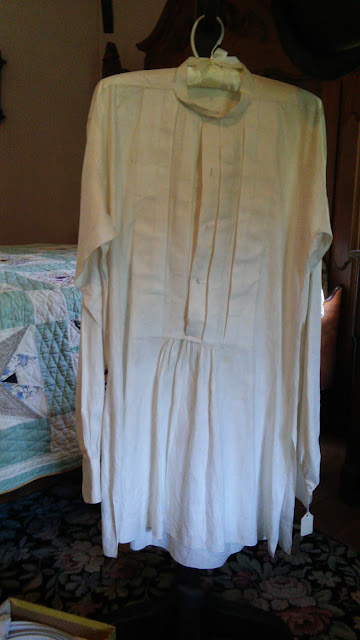However, my 1890's wardrobe was missing one vital piece, a proper hat. The Sophie hat I made using hot glue and model magic to wear with my dress to the Japanese Festival was far from historically accurate. Something new was needed for the Heritage Festival.
 |
| Young Ladies' Hat October 1896 |
This month's Historical Sew Monthly challenge is Historicism: make a historical garment inspired by a previous era. After some research I decided an 1890's straw hat inspired by the 18th century bergere hats was just what I needed. So, after saving a bunch of inspiration images to my 1890's Pinterest board I set to hat making.
I started with this straw hat I picked up a Goodwill a while back. I yanked off all the embellishments, soaked it in water so I could reshape it, and trimmed down the brim a couple inches. Then I decided I wanted to dye it a dark brown. I used Rit dye for synthetics (even though straw is natural, I wasn't sure how it would take dye), and hoped for the best
So into a tub of dye sitting in the bathtub the hat went for a night. I weighed it down with rocks so it would stay fully submerged.
The next morning I pulled the hat out, rinsed it off, and this is what I had.
Not quite as dark as I wanted, but it would do. Time for the trimming to begin! I picked up some feathers at Hobby Lobby and used some fake flowers and a strip of polyester tissue taffeta from my stash.
I played around with my trims until I got the look I was going for then stitched everything in place by hand. No hot glue this time!
The finished product worked splendidly to complete my outfit!
I showed visitors the guest bedroom. I explained about the changes the room had undergone over time and a little about the family who had lived in the house. I also told people about some notable items in the room. The green butterfly quilt on the bed in this picture actually went to the St. Louis World's Fair in 1904, and it won!
I love this pattern! Now, if only I quilted. . .
This shirt was Mr. Lenore's wedding shirt in 1864. Between visitors I examined it as much as possible without touching.
All handsewn with the tiniest stitches and hems imaginable. Amazing attention to detail. I would love to have this kind of sewing ability. Something to aspire to.
 |
| The hem of the drawers |
There was also a wardrobe in the room that held a chemise and drawers from the last quarter of the 19th century. They were sewn with a mix of hand and machine sewing and absolutely amazing. These undergarments of yesteryear were better made than any clothing today. It was a treat to get to volunteer in the house and see these items.
I received many compliments on my dress but after seeing the workmanship of the actual historical clothing, I felt a little inadequate. Good thing sewing is something I can continue to improve at! Though I'm not sure it is an art I can ever completely master, but atleast I can try.
Now for the less impressive details of my new hat.
What the item is: An 1890's Bergere hat, inspired by the Bergere hats from the previous century
The Challenge: #9, Historicism
Fabric/Materials: Straw Hat, Feathers, Fake Flowers, Polyester Taffeta
Pattern: None
Year: 1896-1899
Notions: Thread
How historically accurate is it? The look is right, but that's about it. The materials for the most part aren't.(with the exception of the straw and feathers.) So, maybe 40%
Hours to complete: About 3 hours, unless you count the amount of time the hat was in the dye. Then it would be 16.
First worn: 9/17/16
Total cost: The hat was $4. The feathers were $5. The dye was $5. The fabric and flowers were leftover from another project, basicly free. Thus, about $14.
It was a privilege to volunteer in the house again this year, and it was so much fun to have a dress from the correct era this time! Now, I just need to find a few more excuses to wear my historical dresses before I leave on the World Race in January! This time of year that shouldn't be too hard.














Brilliant! Really sets off the gown well. I can imagine how special it was to be there and to look at the historical garments.
ReplyDeleteSandy in the UK
Thanks! It was a fun weekend :)
Delete